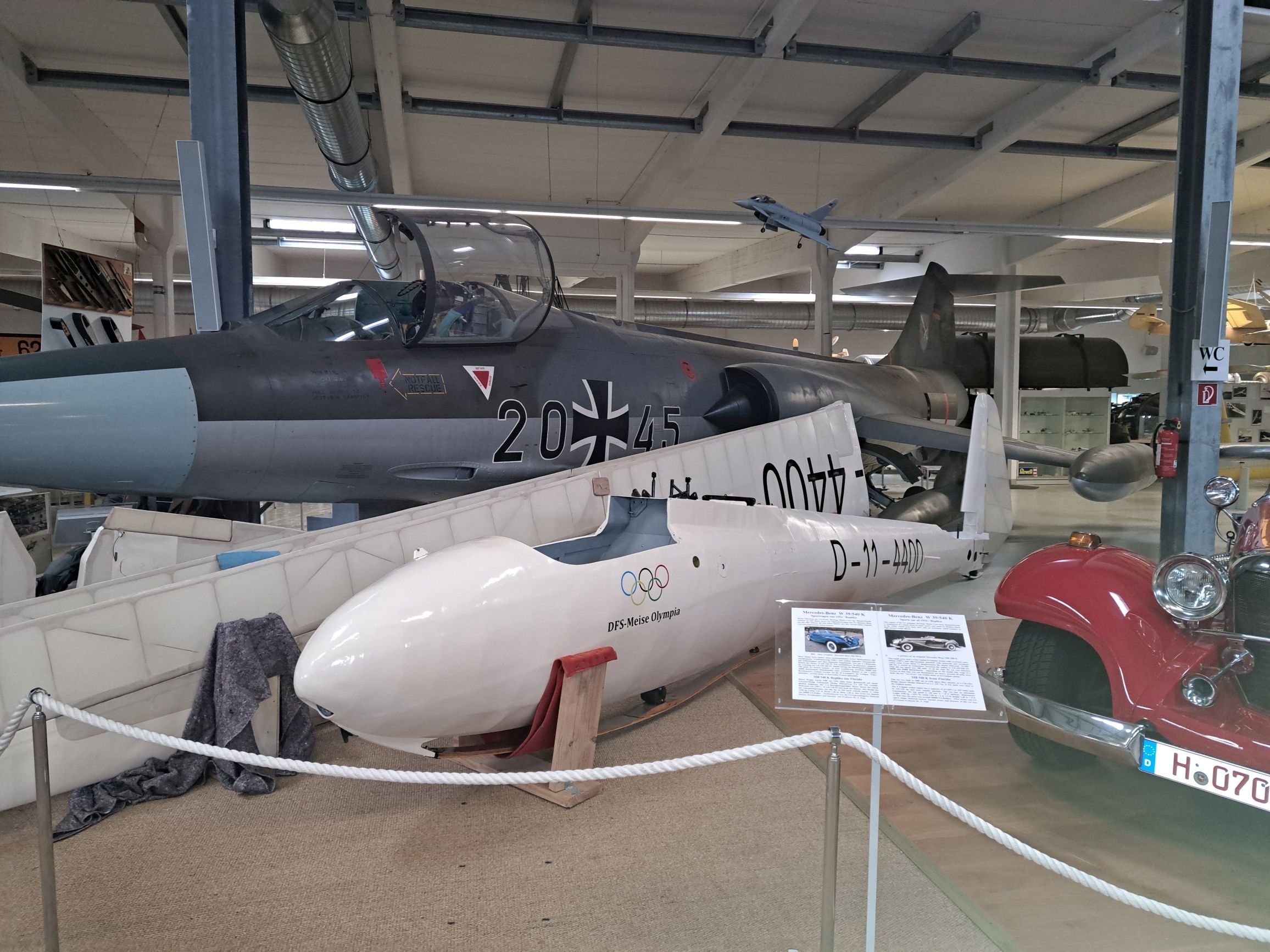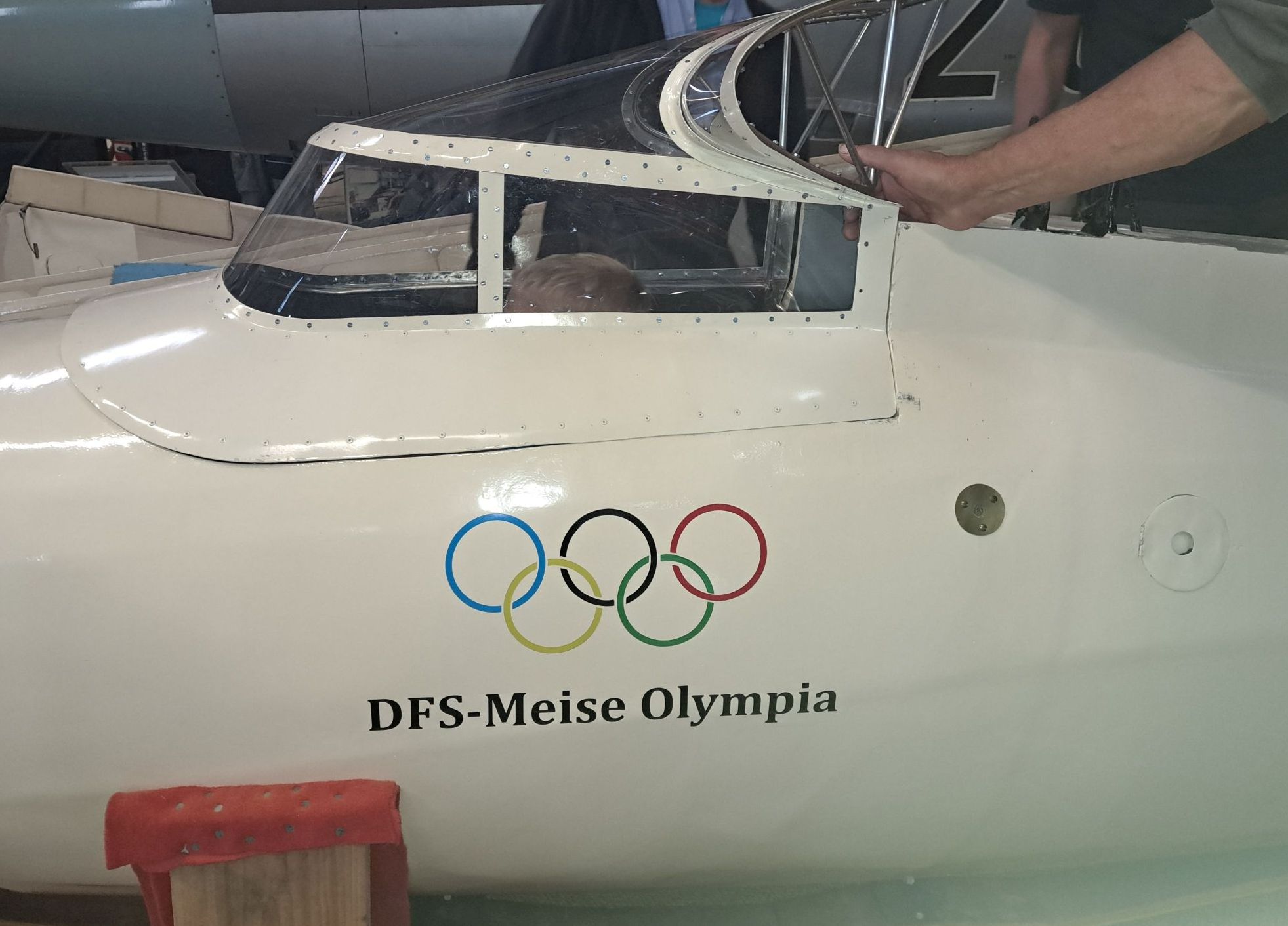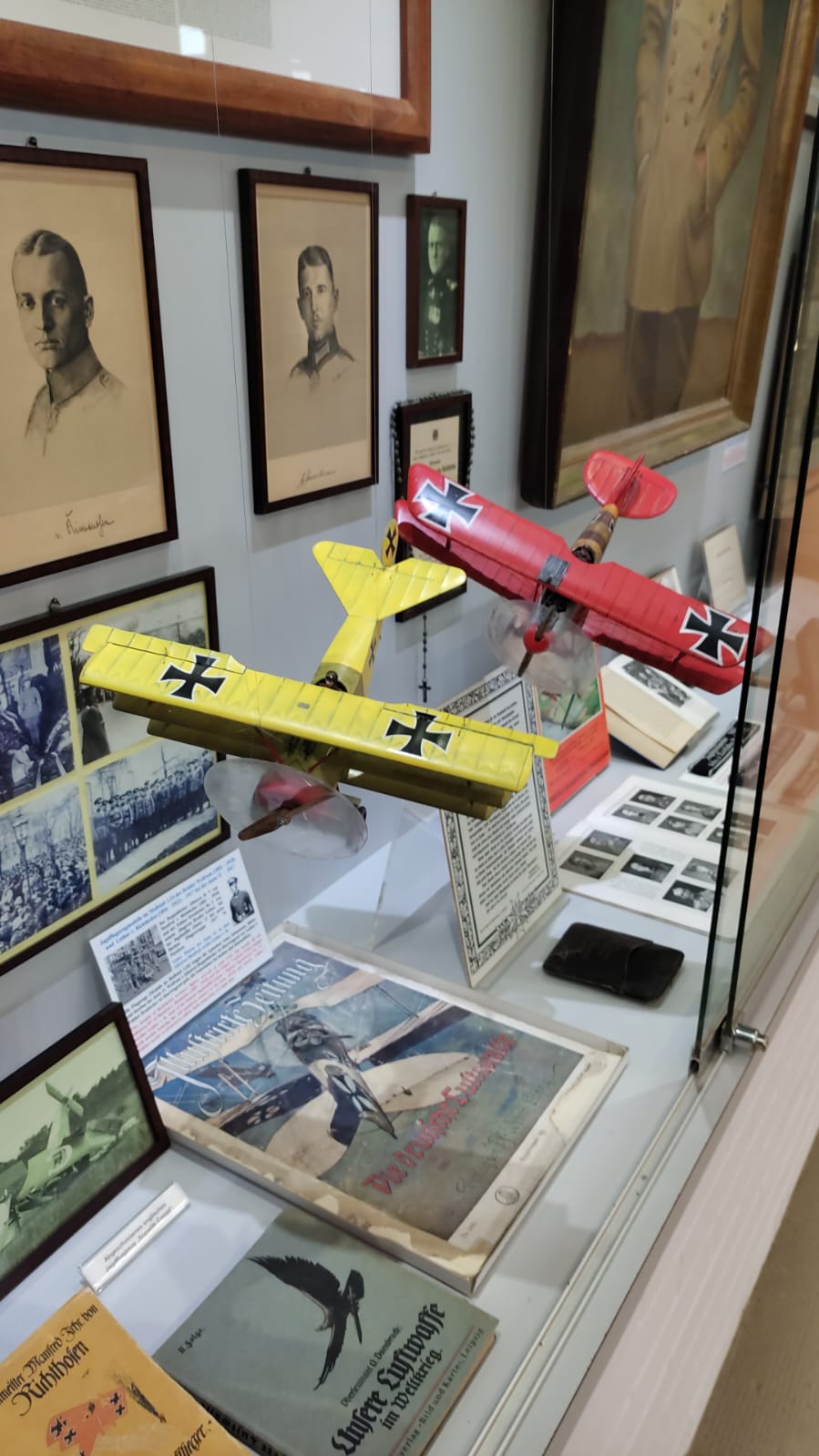News
Our exhibition is constantly being expanded, we constantly get new exhibits and thus improve our collection. You can also find out all about the new additions to the museum here. Every month a model is chosen and described as model of the month. In addition, there is a list of the latest contributions on this homepage.
07.10.2023: The Olympic Tit has arrived.
Today, with the help of the Akademische Fliegergruppe Hannover (Akaflieg), the Olympic Tit arrived at the Laatzen-Hannover Aviation Museum from the Wasserkuppe Gliding Museum:
For the time being, the titmouse is standing next to the starfighter and can already be admired. A final location is being sought.
Many thanks to the Wasserkuppe Gliding Museum for letting us have the Tit.
Many thanks also to our colleagues from the Akaflieg (Akademische Fliegergruppe Hannover), who took care of the transportation. We would especially like to thank Dr. Markus Klemmer.
And thanks also to our colleagues who helped with the organization.
A few words from Wilfried Crome, Chairman of the Aviation Museum:
The DFS "Olympia Meise", was designed in the late 1930s by Jans Jacobs (e.g. Weihe and Kranich I-III) in competition with many to create a standard glider for the Olympic (planned) competition for the 1940 Olympics. Jacobs won, the Olympics were canceled for the well-known reasons. It was a high-performance glider for its time and was much sought after by the winners after the war.
The British rebuilt it (EoN Olympia) and it was also produced for the GST in the GDR near Gotha long after the war. We had one of these in the museum for a long time. It hung above the Jak-18, where the L-Spatz 55 now hangs. This tit comes from the German Gliding Museum (DSM), which gave it to us because they still have a copy. We would like to thank the DSM/Wasserkuppe very much! (WC)
Here mor information from Segelflugmuseum Wasserkuppe.
Here mor information from the Akademischen Fliegergruppe Hannover (Akaflieg).
Addendum: The Olympic tit has now arrived at its final location: Olympia-Meise
So, the pirate is in place, incl. elevator. The wing hangs exactly pber the glider and allows the customers the direct contact to the glider.
Note: In work is still a virtual cord to the winch, which has also already found its place.
More about the pirat you can find here: New entry pirat -- The pirate ready built

Already online
From now on the following functions are online again:
Book Collection Online: Büchersammlung Suchen
360 degree cockpit views: 360 Grad Ansicht
Wehrmanns documents: Wehrmanns Wehrmanns documents
New entry pirat
Just opened: the legendary sailplane pirat
You can find the pirate in hall II, meanwhile the wing is also in its place right above the pirate.
More about the pirat: The pirate is set up -- The pirate ready built






.jpg)
.jpg)
.jpg)



